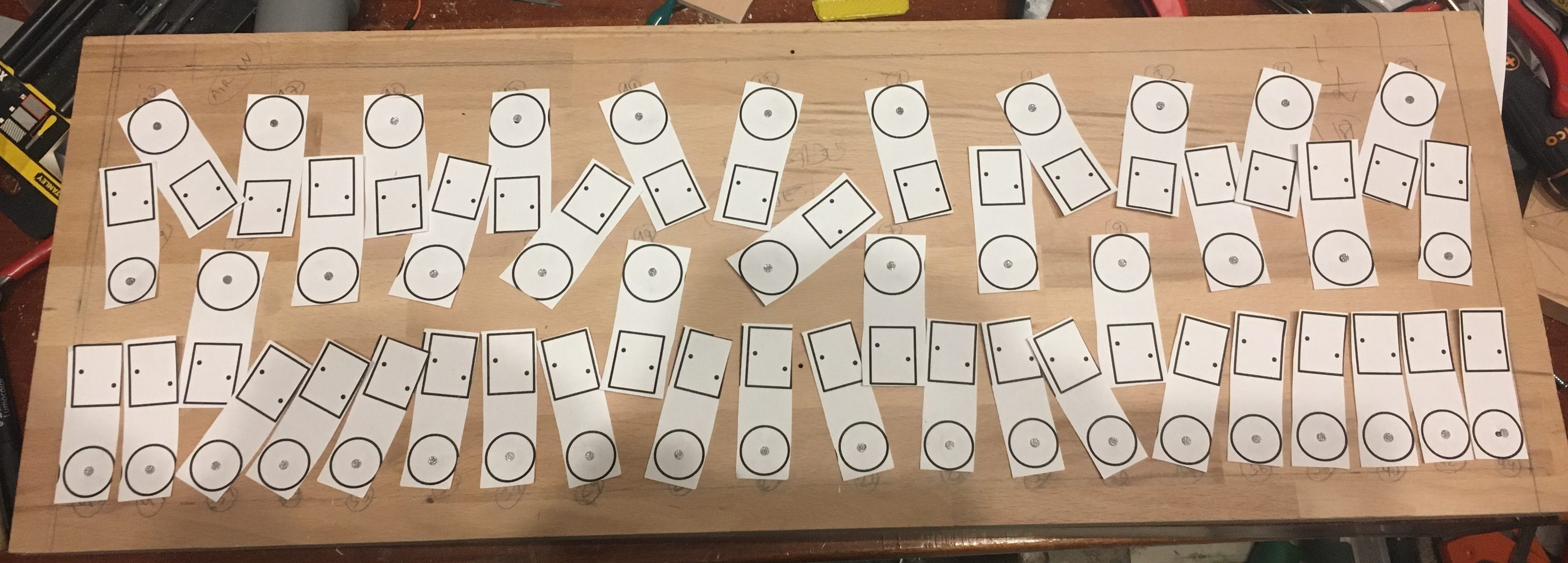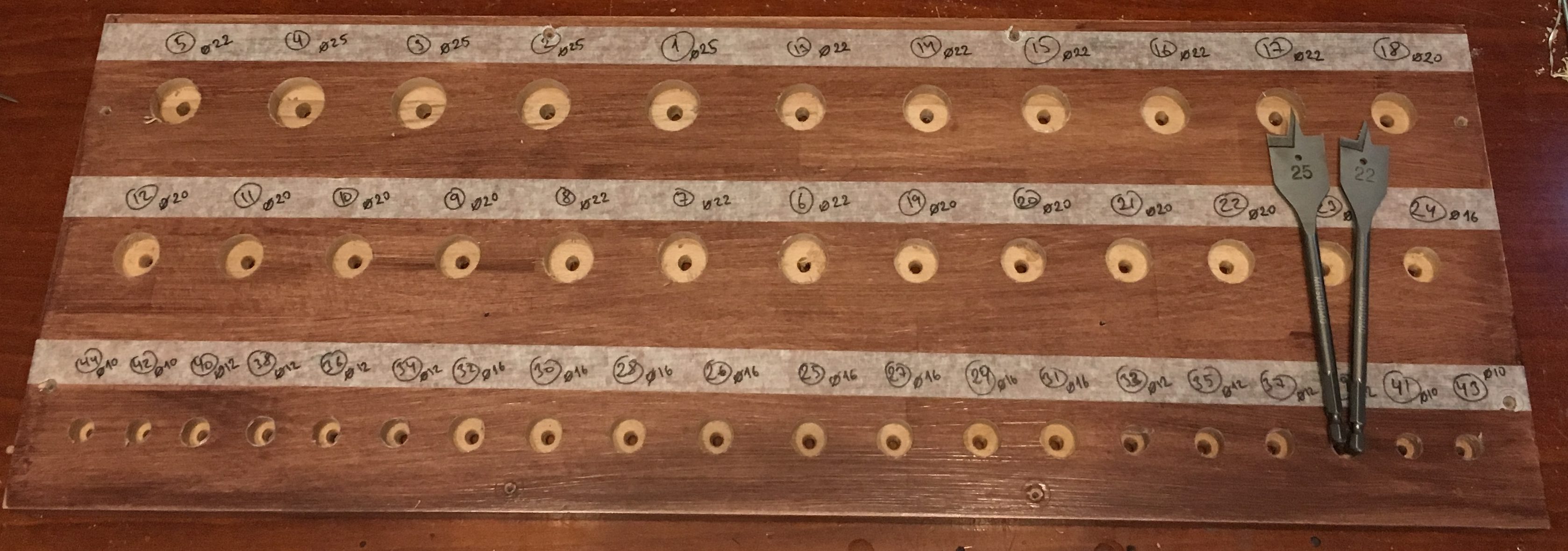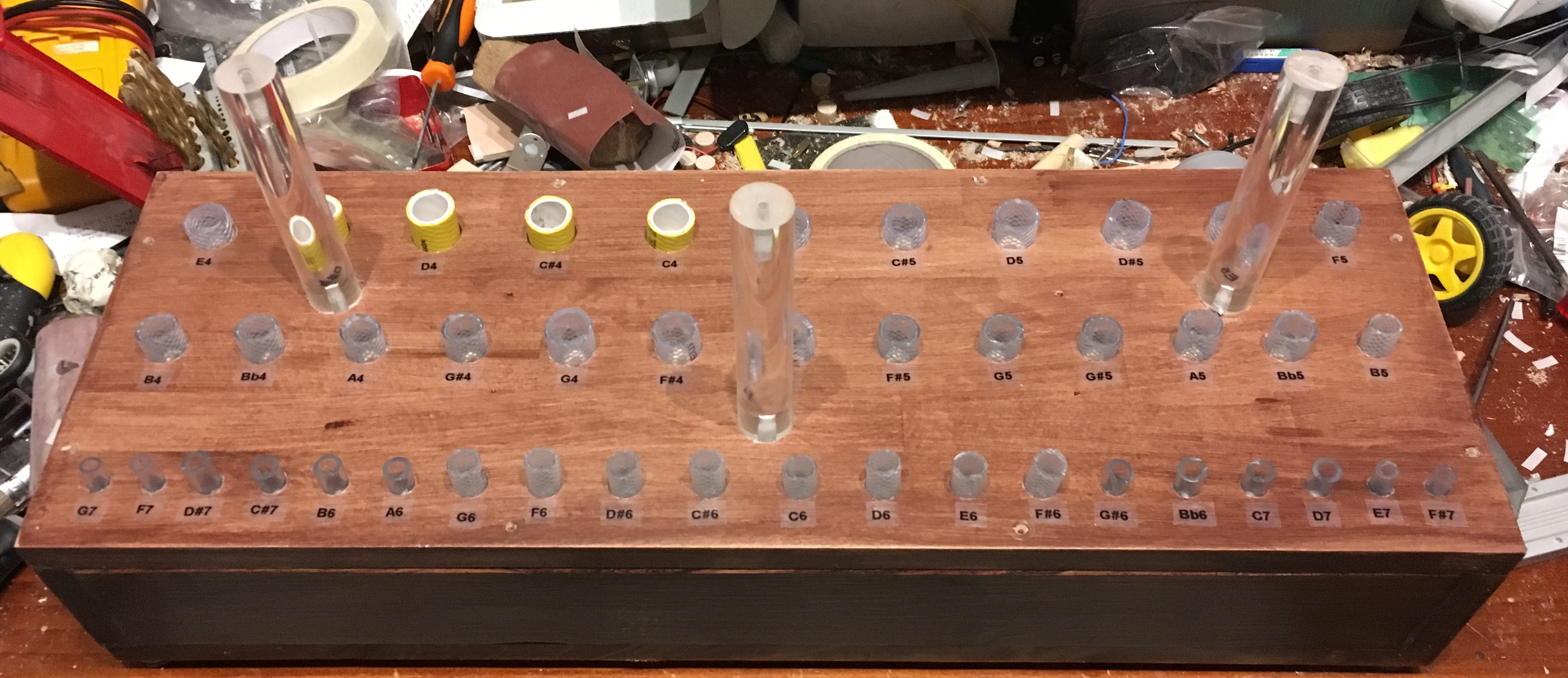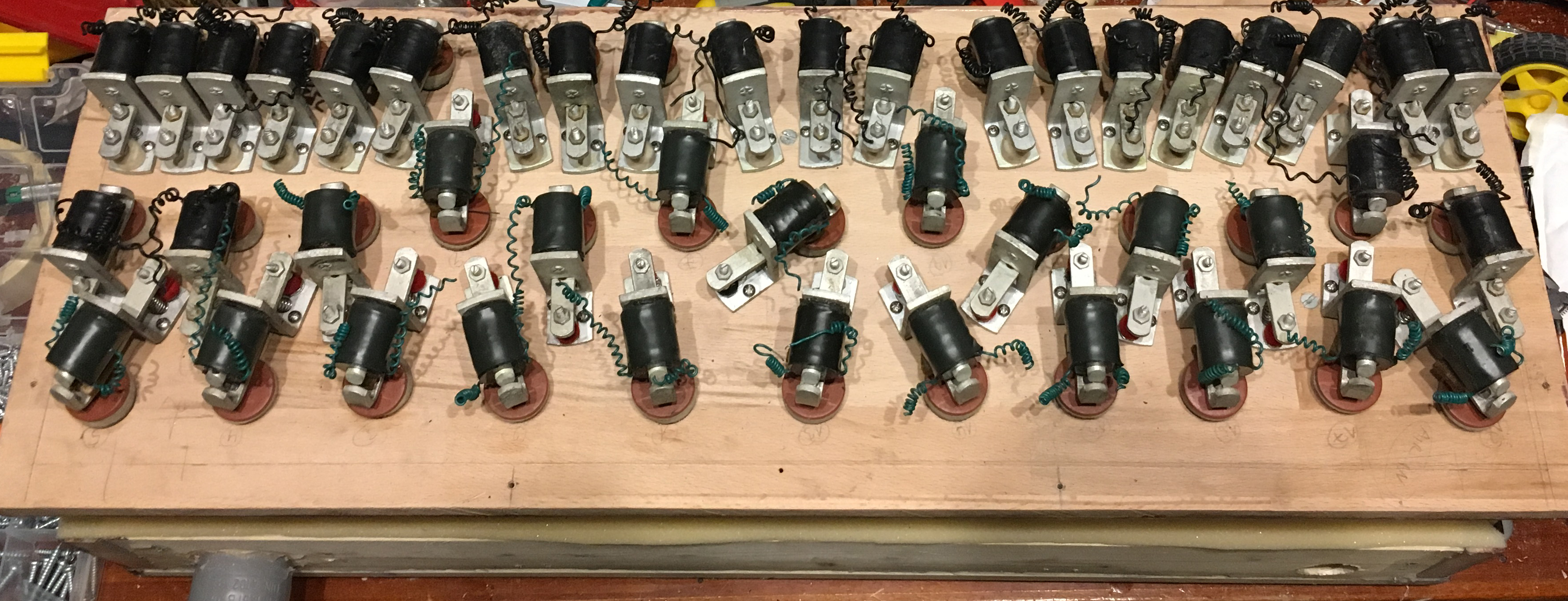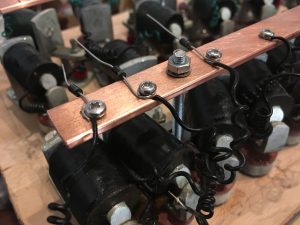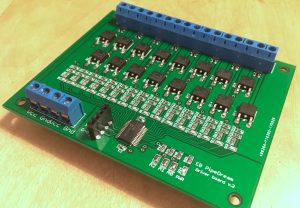We have a 44-pipe rank of harmonic piccolos (actually a 56-pipe rank, but we won’t be using the highest dog-whistle octave here). These are very, very nice sounding pipes in good condition. This partial rank will make up the bottom organ inside the PipeMare cupboard.
Instrument status: Currently under construction, but almost finshed
THE PIPES
A “normal” open flue pipe has a note/frequency that is directly related to its length. So-called stopped or stoppered pipes are closed at the top, basically making the pipes sound one octave lower than a normal open pipe of the same length.
Now, harmonic pipes are quite the opposite. They have a small piercing/hole close to the middle lengthwise. This makes it sound an octave higher than a normal open pipe of same length, and therefore harmonic pipes are generally longer than tonally corresponding open pipes.
In this rank, however, the bottom octave is normal open pipes, while the higher octaves are harmonic. This means that the pipes in the bottom octave (2 ft) and the following higher octave (1 ft) are almost identical in length.
VALVES
The piccolo rank will be placed at the bottom of the PipeMare cupboard. The pipes will be standing on a regular windchest with old 12 V organ pallet valves. Using these valves will be a deviation from our earlier organs, the PipeDream24 test organ and the PipeDream61 diapason organ, where we made our own valves out of linear solenoids.
As discussed in those organ project pages there are some serious drawbacks to linear solenoids as organ valves, and since we got our hands on a batch of old pivoting pallet valves, we are of course going to use them instead. They are much more quiet, easier to prepare, easier to mount, and more stable in operation. But not quite as fun. And possibly not as fast as the linear solenoids.
TOEBOARD
The pipes will be organized in three rows with the longest pipes in the back and the longest pipes in each row in the center, tapering down towards the sides. All pipe dimensions have been measured, and placement of the organ valves were planned:
While the pipes on the topside of the toeboard are placed in nice and even rows, the underside is more chaotic. Because of space restrictions, the valves must be placed rather strangely to make room for all of them. Fortunately, no one will see it once the windchest is closed.
The topside of the toeboard has been stained and varnished. Flatbottomed coutnersinks has been drilled, fitting pieces of PVC pipe for the pipes. This way of making pipe-to-toeboard seals makes it easier to make and makes the organ more robust, when we need to move it.
On the toeboard is also placed three ∅ 25 mm clear acrylic rods. These will carry the first layer of pipe support, which will be made with a sheet of clear acrylic glass.
The cabling is done using a more or less traditional method of running a common lead (+12V in our case) past the valves as a copper strip or bus bar onto which one of the electromagnet leads of each valve is attached. However, due to the rather jumbled arrangement of the valves, there was no room to mount a bus bar on the toeboard itself. So, instead we raised the copper rail above the valves (or rather below, as the valves are upside down). Besides a low-Ohm power rail (which isn’t strictly necessary), we do get an easy way of attaching the electromagnet leads as well as a foundation for arranging all the sink cables (the other leads from the valves) so they don’t interfere with the valve mechanics. The common rail is just two lengths of 3 x 15 mm copper strips, and the leads and diodes are fixed with M3 bolts into tapped threads in the strip.
A challenge is to channel all the 44 sink leads plus the common (+12V source) down to the aviation connector on the back panel, while both being able to open the windchest and not having the cables interfere with the valve pallets.
We are placing fly-back diodes on each electromagnet to reduce noise and spikes. The driver boards (see below) are technically equipped with their own fly-back diodes, but they are placed too far away (appx 1.5 m) from the magnets/solenoids to do any good. The (optional) diodes on the driver boards will only be there as backup protection.
The common current line (+12V source) and the individual sink lines from the pipe valve drivers is connected to a 50-pin aviation connector on the back of the windchest. Soldering the 44 sink lines to a connector without short circuiting was soooo much fun…
EXPANSION CHAMBERS
As discussed in PipeDream61, our original organ design lacked expansion chambers to smooth out the initial sound (attack) of the pipes. Then we also decided, that we would address this in later organ projects. Now, this is a later organ project, but there’s simply not enough space to make any kind of useful expansion chambers. We hope, that the much more silent pallet valves are enough to make the pipe attacks more subtle in the harmonic piccolo, and that the brutal noises of the PipeDream61 will mask any such problems.
PIPE DRIVERS
We’ve designed new drivers for the pipes in PipeMare. The magnet valves used here are not as power hungry, so the drivers used in PipeDream61 are overkill and ineffeicient. Read more on the PipeMare Controller page for more info.
STATUS
[Febrary 2019]
The new pipe supports are finished, and switching to MDF instead of acrylic glass (see below) was a good idea. They may be as fancy, but nobody will notice, and making holes in MDF is very easy. The windchest is now installed inside the PipeMare cabinet.

[January 2019]
The windchest is finished, but the pipe racks to support the standing pipes needs some work. The original plan was to have two layers of pipe support boards (for extra stability in a cabinet that will be moved around quite often), and to make these out of transparent acrylic glass for effect. It turns out that cutting out holes for all the pipes, as well as adjusting the holes to fit each pipe perfectly, was very annoying to say the least. Combined with the fact that the effect of transparent pipe racks is pretty much lost inside the cabinet because of angles and obstructing parts (sweel panels), I’ve decided to discard the acrylic boards, and replace them with simpler boards of stained and varnished wood or MDF.
[July 2018]
Construction of the windchest is now well under way. We still need pressure testing and cabling.
[June 2018]
The piccolo rank has been in planning for a long time, and some preparations have already been made. We started building the PipeMare Accordion, but since that is pretty much completed, the focus will now be on the piccolos. The windchest materials has been prepared for cutting, and valve layout has been laid out.
But before we can finish the toeboard, we still need to test each pipe to determine the optimal size of the valve exhaust holes. To do this, we need a well-known and stable pressure, and to ensure that, we have to finish our pressure logger in the PipeWind v.2. This has proved to be a bit challenging, but will solve the problems soon.
Next: Read about the PipeMare Flutes




